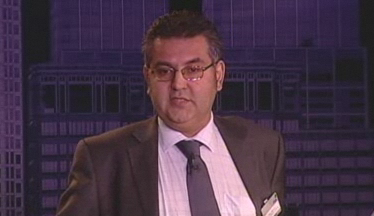The FSA held a Solvency II Conference on 18 April 2011 in London, in which it outlined key outstanding issues and implementation strategies in the run up to the 2013 deadline. The message was clear: Solvency II is coming and we must be ready for it.
Solvency II: a one-in-fifty-year regulatory event
You may think that implementing Solvency II in 2013 marks a decade of progress in European solvency regulation. You may think that. But you would be wrong. Even though its predecessor, Solvency I, came into effect in 2002, conceptually Solvency II marks a giant leap forward. [caption id="attachment_758" align="alignright" width="254"] Hector Sants ©FSA “Our ambition has not been to increase or decrease the amount of capital supporting the UK insurance industry, but rather to ensure that capital is more appropriately aligned with risks.”[/caption]
Speaking at the FSA Solvency II Conference, Paul Sharma, Director – Prudential Policy at the FSA, explains why the gap is so large. “[EU] solvency regulation was first introduced in the 1970s,” but, Mr Sharma said, “it was negotiated in the 1960s and was based on 1950s data. In European terms this profound rewriting of the regulatory approach for Europe is a once in a fifty year event.”
The need for reform was brought sharply into focus by the recent financial crisis. Hector Sants, Chief Executive Officer of the FSA put it succinctly when he told the audience: “One of the most fundamental lessons from the crisis was that firm management did not know the answer to the simple question: under what circumstances will my firm fail?”
Hector Sants ©FSA “Our ambition has not been to increase or decrease the amount of capital supporting the UK insurance industry, but rather to ensure that capital is more appropriately aligned with risks.”[/caption]
Speaking at the FSA Solvency II Conference, Paul Sharma, Director – Prudential Policy at the FSA, explains why the gap is so large. “[EU] solvency regulation was first introduced in the 1970s,” but, Mr Sharma said, “it was negotiated in the 1960s and was based on 1950s data. In European terms this profound rewriting of the regulatory approach for Europe is a once in a fifty year event.”
The need for reform was brought sharply into focus by the recent financial crisis. Hector Sants, Chief Executive Officer of the FSA put it succinctly when he told the audience: “One of the most fundamental lessons from the crisis was that firm management did not know the answer to the simple question: under what circumstances will my firm fail?”
Aligning capital with risk
Solvency II sets out to create stronger EU-wide requirements on capital adequacy and risk management for insurers in order to increase protection for consumers and markets. Speaking of the UK market, but this could well apply to the rest of the EU, Mr Sants said: “Our ambition has not been to increase or decrease the amount of capital supporting the UK insurance industry, but rather to ensure that capital is more appropriately aligned with risks.” As they prepare to meet the Solvency II deadline, regulators and insurers are like a group of surfers bobbing cautiously in the water as a huge wave swells up ahead. The surfers must time their progress to make contact with the moving mass of water. Get it right and you’re flying. Get it wrong, and you’re all over the place, with a mouthful of salty water. [caption id="attachment_768" align="alignleft" width="299"] FSA Solvency II Conference 18 April 2011 ©FSA[/caption]
In the offices of insurers and regulators, managers are bobbing their organisations cautiously towards the swelling and shifting mass that is a set of changing regulatory requirements. With the final draft of the regulation only due in the latter part of 2012, a lack of clarity from the EU on key issues and a chronic shortage of qualified people, they too must negotiate their approach carefully. For them the question is: are we investing the right amounts in the right areas?
FSA Solvency II Conference 18 April 2011 ©FSA[/caption]
In the offices of insurers and regulators, managers are bobbing their organisations cautiously towards the swelling and shifting mass that is a set of changing regulatory requirements. With the final draft of the regulation only due in the latter part of 2012, a lack of clarity from the EU on key issues and a chronic shortage of qualified people, they too must negotiate their approach carefully. For them the question is: are we investing the right amounts in the right areas?
The FSA’s implementation plan
Faced with these challenges, both to itself and the industry, the FSA announced at the conference that it will focus on a small number of key firms in the run up to the implementation deadline. During the pre-application phase of the Internal Model Approval Process (IMAP) the FSA will pay closer attention to firms that represent a significant market share. These firms already notified the regulator of their intention to use an internal model to calculate the Standard Capital Requirement (for more details see Solvency II – IMAP update Pre-application process). According to Julian Adams, the FSA’s Solvency II Programme Sponsor and Director – Insurance, these will broadly include: the top ten UK life and non-life firms; firms operating in the Lloyd’s market; and subsidiaries of major European groups. Other firms already registered in the pre-application process will receive a lower level of interaction from the FSA’s actuaries and risk specialist. “By and large, the firms where we are applying our resources are the largest and most complex, and therefore those for whom the challenge of building and implementing a model will be the greatest,” explained Mr Adams.Tools for developing the internal model
For those firms that will receive a reduced level of attention, the FSA will soon publish a set of tools to help bridge the gap and “ensure their model development continues in the right direction”. These will include:- “Stress testing for general insurance firms;
- reference portfolios to test model treatment of certain types of asset or business;
- industry standards on catastrophe models; and
- specified models for certain esoteric types of firm.”
Introducing external reviews
[caption id="attachment_761" align="alignright" width="227"] “The Directive is clear that the same standards apply to all firms, and that is how we will implement it.” Julian Adams ©FSA[/caption]
The FSA will also introduce external reviews into the approval process whereby firms can submit independent reports on some aspects of their internal model and how it works.
The reviews will give firms a better idea of what the FSA is looking for in the approval process and, because a consistent reporting formula will be used, it will help streamline the process as well. The scheme will be piloted in the area of data with more details due in the summer.
“The Directive is clear that the same standards apply to all firms, and that is how we will implement it.” Julian Adams ©FSA[/caption]
The FSA will also introduce external reviews into the approval process whereby firms can submit independent reports on some aspects of their internal model and how it works.
The reviews will give firms a better idea of what the FSA is looking for in the approval process and, because a consistent reporting formula will be used, it will help streamline the process as well. The scheme will be piloted in the area of data with more details due in the summer.
You must, you must, you must … be ready by 2013
However, Mr Adams stressed that all firms affected by Solvency II must have correct systems in place for the January 2013 deadline, irrespective of the level of attention they have been assigned or whether they are in the pre-approval process or not. “The Directive is clear that the same standards apply to all firms, and that is how we will implement it. We are merely being proportionate here in how we apply our internal resources to our investigations as to whether those standards are being met.”Outstanding issues
Overall the FSA believes the UK insurance industry is well prepared to brace the challenges of the Solvency II seas. In part this is because it has implemented the Individual Capital Adequacy Standards (ICAS) regime in 2006, which, like the capital adequacy requirements of Solvency II, obliges insurers to asses their capital base to meet future liabilities. “We view Solvency II as an evolution of the regime which we have had in place here in the UK for a number of years,” said Mr Adams. But there are significantly outstanding issues which the industry must negotiate: part of that looming wave. Paul Sharma, discussed a number of these in detail.Inaccuracies in the standard formula calibration
The standard formula used to calculate a firm’s capital adequacy is too generic, and each firm has to calibrate the formula to fit its specific business. “The obvious answer to make the standard formula relevant for individual firms is to innovate and add greater subtlety,” said Mr Sharma. But, he added, “Greater subtlety leads to more complexity.” Currently there are significant problems with the accuracy of these calibrations which are yet to be resolved by the EU, he noted.Assessing market consistency of illiquidity premiums
The EU is also still trying to work out how to evaluate illiquidity premiums in the technical provisions of the regulation. This is an area which has been given “high priority” by both the FSA and the Treasury. [caption id="attachment_765" align="alignright" width="262"] Illiquidity premiums – an area of “high priority” for both the FSA and the Treasury. Paul Sharma FSA©[/caption]
In order to produce a market consistent valuation of assets and liabilities it is necessary to take account of the degree of illiquidity of those liabilities, said Mr Sharma.
He then explained that the “illiquidity of liabilities” is the degree of certainty of the timing of the cash-flows arising from those liabilities. “The more certain the timing flow of liabilities, the more one can safely map those liabilities with illiquid assets of the right term and duration. And the more one can back a liability with illiquid assets and thereby reap the illiquidity premium on those illiquid assets, the lower the market consistent value of those liabilities is.”
The FSA has been, “pressing very hard for the full and proper adoption of market consistent valuation recognising that illiquidity is part of market consistency,” he said.
Illiquidity premiums – an area of “high priority” for both the FSA and the Treasury. Paul Sharma FSA©[/caption]
In order to produce a market consistent valuation of assets and liabilities it is necessary to take account of the degree of illiquidity of those liabilities, said Mr Sharma.
He then explained that the “illiquidity of liabilities” is the degree of certainty of the timing of the cash-flows arising from those liabilities. “The more certain the timing flow of liabilities, the more one can safely map those liabilities with illiquid assets of the right term and duration. And the more one can back a liability with illiquid assets and thereby reap the illiquidity premium on those illiquid assets, the lower the market consistent value of those liabilities is.”
The FSA has been, “pressing very hard for the full and proper adoption of market consistent valuation recognising that illiquidity is part of market consistency,” he said.







6 thoughts on “The FSA Solvency II conference – meeting the deadline”
Comments are closed.